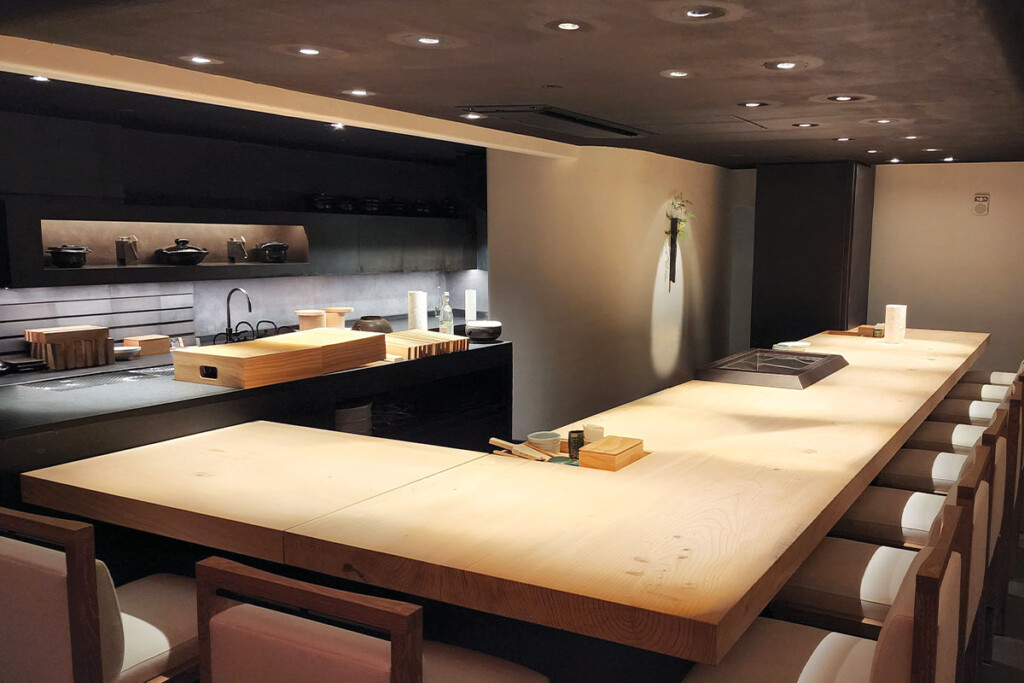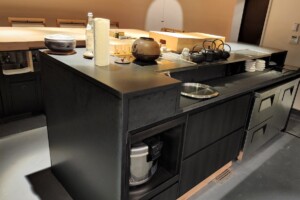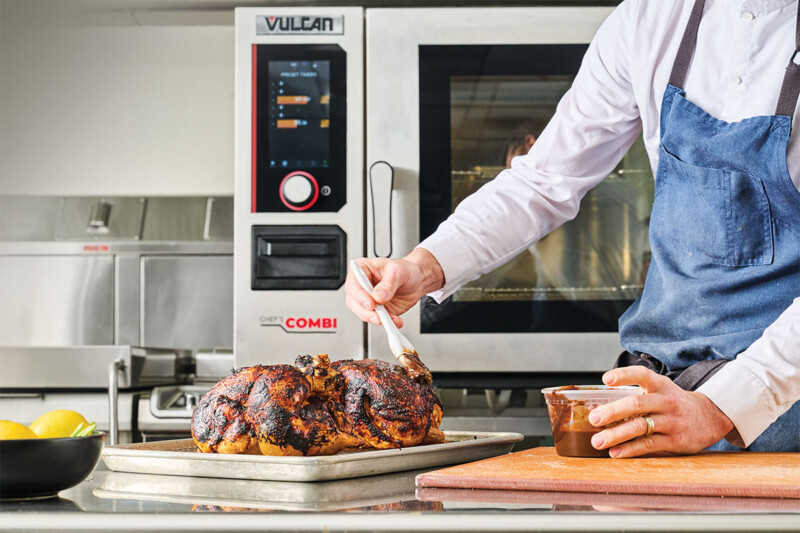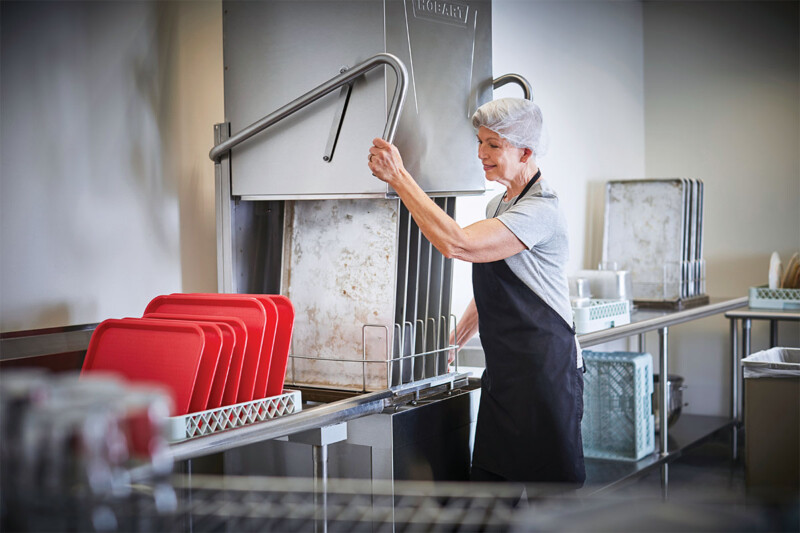Equipping For Sushi: The Total Package
Heavily custom yet thoughtfully simple, Joji sets the stage for a high-end sushi experience.

Omakase—defined as “according to the chef’s choice”—is an intimate and tastefully designed experience, from start to finish.
In New York City and beyond, the trend is driving newer sushi concepts. Over the last few years, Next Step Design Director Leif Billings has worked to bring several such restaurants to life, including one at New York City’s Point Seven and a pair within private club restaurants. But one that stands out in his mind is Joji, the first sushi concept for Michelin-starred Chef Daniel Boulud. Joji, run by Chef George Ruan, and its to-go counterpart Joji Box reside in New York City’s One Vanderbilt—the same Midtown Manhattan skyscraper where Boulud’s Le Pavillon resides—just barely removed from the bustle of Grand Central Terminal. To bring Joji to fruition, Billings worked alongside Simplicity Design, which uses shitsurai: the act of transforming the energy of a space using decorative objects. The duo leaned on some main custom pieces, then worked in off-the-shelf support out of sight.
Here’s a peek at the inner workings.
Front and Center: ‘Semi-invisible’ Equipment

Thoughtfully placed sinks, reach-ins and more support Joji in the front-of-house without drawing a customer’s eyes from the main attraction.
In Joji’s intimate, 10-seat dining room, all eyes are meant to be on one thing. “The food is definitely the focus,” says Billings. “The room is beautiful, of course, but it’s not overdesigned.”
The chef works at a thick, custom wood counter that includes a recessed, custom refrigerated display case for fish—much smaller than most off-the-shelf sushi display cases—and rice is subtly stored in a couple wooden rice holders. “Your dining and prep is almost at exactly the same height; you don’t have this big barrier,” notes Billings. “You’re really seeing exactly what the guy is doing as he prepares it.”
If you were to take your eyes off the chef, you’d see little equipment—with powder-coated, black finishes on some items and camouflaged placement for others. “There’s really no equipment on display,” says Billings, “If you see it, it kind of looks more like furniture than anything else. The hand sinks are undercounter, and not just undermount—literally, you can’t see them unless you’re trying to crawl behind the counter.”
On the beverage side, a tea prep area with a warmer and a countertop with a drop-in drainer are somewhat visible. The establishment also has a deep wine cellar, with bottles (some of them quite high-end) stashed across reach-ins and undercounter units, but it’s not showcased, says Billings. “You have a very tiny glimpse of it from a couple angles, but it’s not really meant to be featured. Really, they were trying to feature almost nothing other than the room.”
Backing the Main Attraction
Orders at Joji Box and Joji are fulfilled through two separate back-of-house areas, each of which has a walk-in and respective dishwashing areas. Otherwise, the equipment lineups have little in common.
Joji, which has an 8-seat private dining room in addition to its main counter, has a hot-side lineup including a fryer, a Japanese gas grill, a four-burner gas range, a gas cheesemelter and a combi.
During the peak of the lunch rush, says Billings, staff can prep grab-and-go items in Joji’s space, but Joji Box also has a separate prep kitchen up on the second floor, behind Le Pavillon. There, a rice cooker, two sushi robots (a sheeter and a cutter), a freezer, refrigerator and self-contained sushi display cases are stashed.
“Anything that’s going into those grab-and-go cases is only there for a very short time till it sells out, and then they sort of keep the inventory low so that it’s not sitting there all day,” says Billings, who notes to-go customers (himself included) still get “very, very high-quality sushi” at Joji Box.
Right On Trend
Joji and Joji Box are already a couple years in, having opened in the fall of 2022, but Billings says the one-two punch of omakase and high-end grab-and-go remains hot.
“That’s what we’ve seen with both Point Seven and Joji Box and, incidentally, they’re about 200 feet apart from each other right near Grand Central,” he says.
RELATED CONTENT
- Advertisement -
- Advertisement -
- Advertisement -
TRENDING NOW
- Advertisement -
- Advertisement -
- Advertisement -


